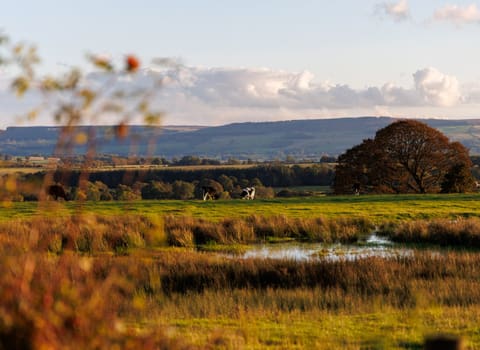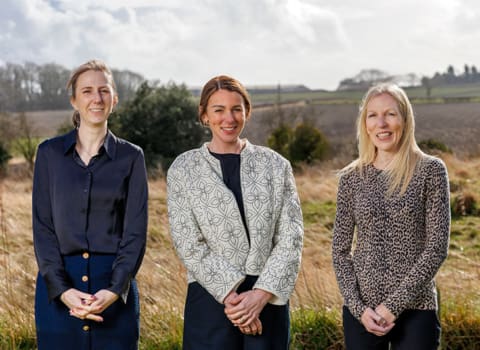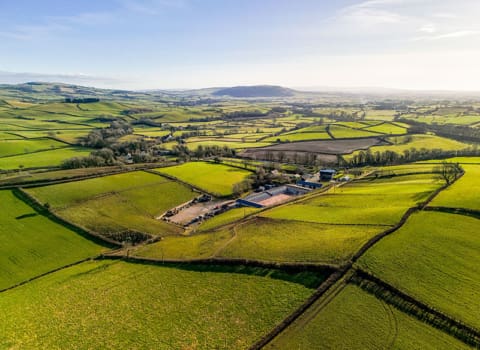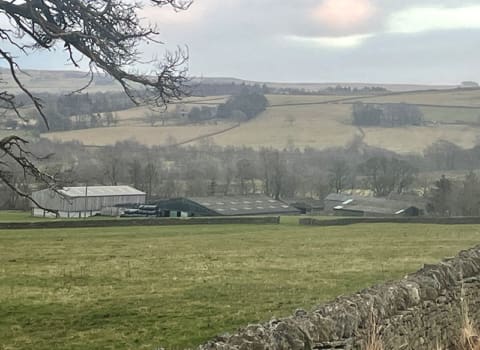Contact our offices
Main office
COLBURN
5 & 6 BAILEY COURT
COLBURN BUSINESS PARK
RICHMOND
NORTH YORKSHIRE
DL9 4QL
Estate Agency Offices are located in
BARNARD CASTLE, BOROUGHBRIDGE & RICHMOND
Residential Management Team
Our Offices
- Alnwick
01665 568310
Email Officealnwick@gscgrays.co.uk - Barnard Castle
01833 637000
Email Officebarnardcastle@gscgrays.co.uk - Boroughbridge
01423 590500
Email Officeboroughbridge@gscgrays.co.uk - Chester-Le-Street
0191 3039540
Email Officechester-le-street@gscgrays.co.uk - Colburn
01748 897630
Email Officecolburn@gscgrays.co.uk - Driffield
01377 337180
Email Officedriffield@gscgrays.co.uk - Hamsterley
01388 487000
Email Officehamsterley@gscgrays.co.uk - Hexham
01434 611565
Email Officehexham@gscgrays.co.uk - Kirkby Lonsdale
01524 880320
Email Officekirkbylonsdale@gscgrays.co.uk - Penrith
01768 597005
Email Officepenrith@gscgrays.co.uk

Post Harvest Industry Review
As the Christmas break approaches, now would seem like an opportune moment to take stock of where the industry stands and reflect on the issues that have hit the farming press to date following a delayed harvest.
Quick to hit the headlines at the start of the year was undoubtedly how the roll out of the Basic Payment Scheme was handled. With delay upon delay it was inevitable that the RPA would have to postpone its implementation of a paperless system for future years. The eagerly awaited new online system which has cost in the region of £150m to implement so far, never materialised and eventually the RPA confirmed in March that the system was to be side-lined for 2015. What followed was a dash to submit printed paper BP5 forms in order to meet the extended June deadline. We wait in anticipation for the launch of the online system for 2016 applications, although the RPA have confirmed that paper forms will be made available for 2016 claims.
The RPA began making payments to the first 30,000 Basic payment Scheme claimants on 1st December 2015, and reassuringly hopes to complete outstanding payments by the end of January 2016. In recent weeks some holdings have also received confirmation of land and entitlement transfers although we still await updated Rural Land Registry plans to be published.
All of this follows the work that the RPA has undertaken since June, processing BP5 forms in addition to carrying out on farm inspections in line with their pledge to inspect 5% of all claimants.
Meanwhile Natural England have been busy implementing a rather fragmented introduction to the new Countryside Stewardship Schemes (CSS) which is the new face of agri-environment schemes aimed at providing £900m to the rural economy. As of 1st October 2015, Natural England had received over 2,200 Mid-tier applications and over 1,000 Higher-tier applications – a substantially lower uptake than had been envisaged although there are no plans to amend the application process. Since then Natural England has been scoring applications and offering agreements to applicants based on a competitive process. The application window for 2016 is yet to be confirmed although those holdings that have been successful with an application in 2015 will need to ensure they return acceptance of the agreement to Natural England no later than 15th December 2015.
HARVEST
Harvest 2015 has been challenging for many but has produced some promising yields, proving what some land is capable of yielding given the right conditions. Recent data published by ADAS shows cereal yields are up 14% above average and testament to this is the recent world record claim for the highest wheat yield, tipping the scales at 16.52t/ha achieved on a farm in Northumberland.
Without a sustained period of fine dry weather, harvest was somewhat intermittent and has made traveling on saturated ground challenging. This meant that some holdings were combining their remaining crops well into mid-October, heavy rain and gale force winds have repeatedly hit most of the country since late September and have made some farmers think twice about their winter cropping.
Pulse crops however remain a popular choice for 2015/16 cropping, no doubt driven in part by the BPS Greening rules and strong demand both in the domestic and export markets. Prices are holding steady around £120/t which is where they were back in 2009/10. The global market for cereals would appear to be saturated with good quality grains owing to successful growing and harvesting seasons reported by all major producers.
LIVESTOCK MARKETS
The livestock sector never fails to be a challenging market in which to operate; price fluctuations and generally low values continue to squeeze profit margins. Although commodity prices have dropped over the past few months, feed and electricity costs remain high. Low commodity prices do however beg the question whether it is cost effective to continue buying in feed, or look at becoming self-sufficient, if farming operations allow.
Pig producers are another example of a struggling industry where finished pig prices have continued to fall since August. An EU spec standard pig averaged 126.47p/kg for the week ending 14th November-some 20p short of 2014 prices for the same week. On the same note, 30kg weaners are some £8.50 per head down year on year.
There are a number of seasonal factors being blamed for this downward trend which include an oversupply and a weak EU market. Producer margins show little sign of improving soon, although strong demand from China may offer some re-assurance for the export market.
DAIRY
The dairy industry took centre stage over summer as farmers responded in a variety of ways to a drop in farm gate prices for their milk. This followed action taken by our European neighbours in France and Brussels who responded to what was described as an attack on milk prices.
In response, the EU launched a £26.6m dairy aid package to help support struggling dairy farmers by providing them with a one off grant averaging £1,800 per holding. Payments began on 16th November 2015 and are set to continue through December although for some, these payments will be too little too late.
Keen to shy away from the negative publicity in the media, several supermarkets were keen to use this to their advantage by coming to the rescue of UK dairy farmers. Aldi, Asda and Lidl have all promised a minimum price of 28p/litre however a question over how long they will sustain this remains. On 12th October 2015 Morrison’s launched a new milk and cheese brand dubbed “Milk for Farmers” the idea being that 10p/litre will be passed back directly to the farmer for every bottle sold and 34p for every pack of cheddar cheese. Some farmers see this as a step in the right direction whilst others have condemned it as a public relations stunt.
It is quite shocking to think that a bottle of milk is now cheaper than a bottle of water and perhaps a sign of the times. What is clear is that our livestock industry needs the support and backing of ministers and Government departments who are committed to the success of British agriculture. Between November 2014 and November 2015, 326 dairy farms in England closed (AHDB-Dairy) – a loss of almost 4% on the number of producer’s year on year or put more simply, nearly one dairy farm every day.
BADGER CULL
The badger cull has been another controversial area that has attracted coverage in the national press due to strong opposition from a range of high profile objectors including Brian May and Café Nero. Badgers have been linked to the spread of Bovine TB in certain hot spot areas and figures suggest that they are responsible for transmitting the disease in 50% of cases. Initially a badger cull area was approved in Somerset and Gloucestershire however this was then later extended to include Dorset. The argument continues to rage as to whether or not vaccination is better than a cull.
For this year at least, the cull in Dorset and Somerset has now come to an end and the industry awaits the results. Clearly this is an emotive subject with many discussions yet to take place but the cost of TB to the economy is significant, whether you look at it from the point of view of the number of cattle slaughtered, or the cost of vaccination and monitoring.
FUEL & TIMBER
Oil prices have dropped significantly over the past few months to their lowest values since 2011. Historically fuel prices shadow that of wheat, which is promising news for hauliers and households as road fuel prices and heating oil have dropped to levels which make solid fuels look comparatively expensive. The latest figures released show that red diesel averaged 44.51p/l whilst white diesel averaged 110.78p/l during October 2015. Lower fuel costs alleviate the pressure on running costs and are a welcome site across the board.
Although log prices are down by approximately £10 per tonne, year on year there remains strong demand for small round wood used for biomass. Our reliance on imported timber is high as the UK is only 20% self-sufficient. The volume of UK harvested timber is predicted to flat line for the next ten years before dipping to reflect the lack of woodland planted in the late 1970’s and 1980’s.
We are already at a point where many of the existing commercial woodlands of northern England and southern Scotland are close to exhaustion but the barriers to afforestation such as planning issues mean that many of these will not be re-stocked. Despite this, the local authorities still have aspirations of planting 21,000ha of forestry over the next 10 years in order to increase forest cover in the north of England up to 15% and 25% in Scotland.
In order to meet this target we need to plant around 2,000ha of forestry every year, however, those in the logging industry believe that we are a long way behind this target and place the blame partly on the Forestry Commission for being unambitious. The hurdles to overcome in terms of planning and environmental protection naturally present a barrier for which the financial return is simply not enough.
The amalgamation of the English Woodland Grant Scheme with the new Countryside Stewardship Scheme is undoubtedly complicated for those not involved with it on a regular basis, but there are substantial funds available to assist with the cost of installing infrastructure for forestry and creating management plans and addressing tree health.
FINANCE & TAX
Fresh from the final budget statement before the May election was an announcement by George Osborne to an extension to farmers’ tax averaging. From April 2016, a five year period will now be allowed which is designed to help farmers cope with market volatility and focus more on investment, this will undoubtedly be welcomed by many farmers, not least the dairy sector.
It is worth noting that changes to the Annual Investment Allowance will come into force from 1st January 2016, the current limit will reduce from £500,000 per annum to £200,000 which means that for businesses with accounting periods which straddle this date it may be prudent to take tax advice in respect of maximising reliefs and capital expenses.
Other points worthy of mention are changes to the taxation of dividends and the introduction of the national living wage from April 2016. This is by no means an exhaustive list of changes and if you are in any doubt about how any of these changes may affect you or your business you should seek professional advice.
SPORTING
The start of the Grouse shooting season is a firm favourite on the country sports calendar but the atmosphere on the 12th August was slightly deflated this year owing to poor rearing conditions which has meant that bird numbers are down significantly in some areas. Because of this, many estates have had to cancel let days this year which has also led to knock on effects within the rural economy as the normal high demand for local accommodation and hospitality services during this season has dropped as a result. Our £2bn shooting industry however continues to prosper with more people entering the sport.
MOVING FORWARDS
As the countdown to Christmas begins there are still busy times ahead and changes on the horizon that will affect the industry going into 2016. The next few weeks for livestock and poultry farmers will no doubt be busy in preparation for the pre-Christmas boom and sales at the local auction marts are attracting strong numbers, representing a strong appetite for trade.
We wait with baited breath as to how the RPA will roll out the new online system for BPS applications in 2016 and how this system will integrate with applications for Countryside Stewardship.
In George Osborne’s Autumn statement he confirmed that DEFRA must make savings of 15% by 2019/20 which will primarily be achieved by increasing the efficiency of back office functions and reducing red tape. This figure is somewhat lower than the 40% savings that had been rumoured but is none the less still of concern.
We often forget the vital role that DEFRA plays in supporting our industry and promoting rural England, indeed the Government department has historic links with the north of England and will remain so by benefitting from a £50m investment in the construction of two new agricultural technology centres in York.
Clearly there are savings that can be made and processes that can be streamlined as there are in so many Government departments, but let’s hope that DEFRA doesn’t lose touch with the traditional industries they serve in its pursuit of a digital revolution.
[team-member name=”Alexander Morrison”]
GSC Grays offer a full range of professional services to rural land and property owners. For further information please contact:
[team-member name=”Guy Coggrave”]

GSC Grays News
Residential Property Market: Recent Trends and Prospects for the year ahead
Read more







